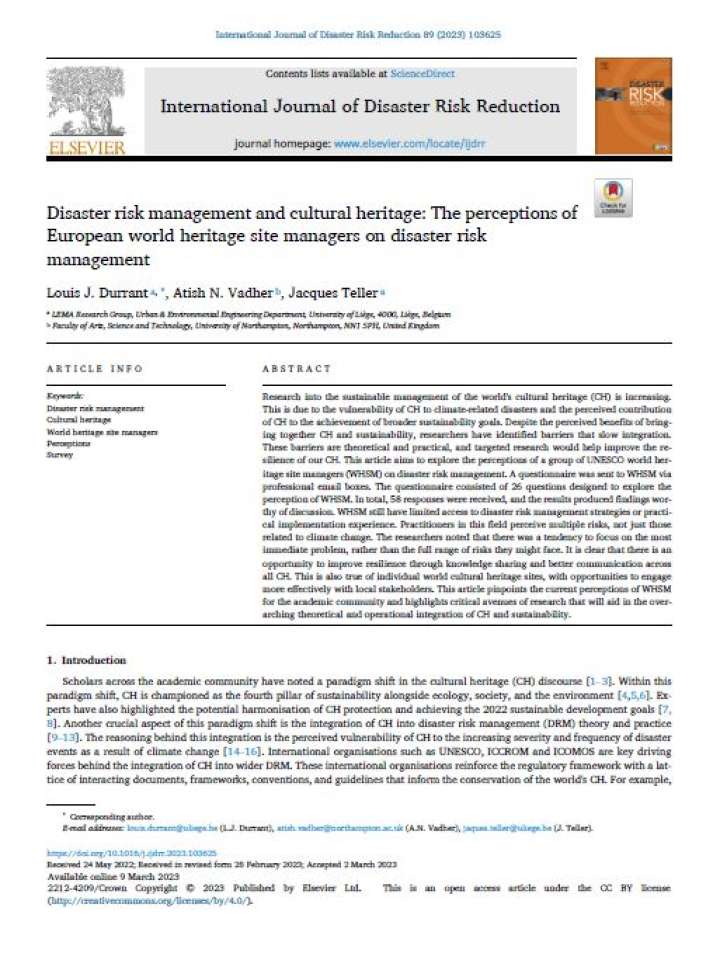Disaster risk management and cultural heritage: The perceptions of European world heritage site managers on disaster risk management
This article aims to explore the perceptions of a group of UNESCO world heritage site managers (WHSM) on disaster risk management. Research into the sustainable management of the world's cultural heritage (CH) is increasing. This is due to the vulnerability of CH to climate-related disasters and the perceived contribution of CH to the achievement of broader sustainability goals. Despite the perceived benefits of bringing together CH and sustainability, researchers have identified barriers that slow integration. These barriers are theoretical and practical, and targeted research would help improve the resilience of our CH.
A questionnaire was sent to WHSM via professional email boxes. The questionnaire consisted of 26 questions designed to explore the perception of WHSM. In total, 58 responses were received, and the results produced findings worthy of discussion. WHSM still have limited access to disaster risk management strategies or practical implementation experience. Practitioners in this field perceive multiple risks, not just those related to climate change. The researchers noted that there was a tendency to focus on the most immediate problem, rather than the full range of risks they might face. It is clear that there is an opportunity to improve resilience through knowledge sharing and better communication across all CH. This is also true of individual world cultural heritage sites, with opportunities to engage more effectively with local stakeholders. This article pinpoints the current perceptions of WHSM for the academic community and highlights critical avenues of research that will aid in the overarching theoretical and operational integration of CH and sustainability.
Explore further
